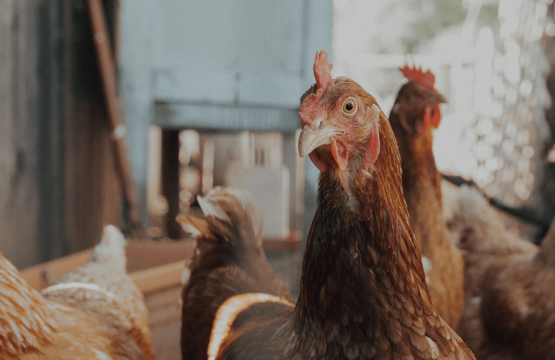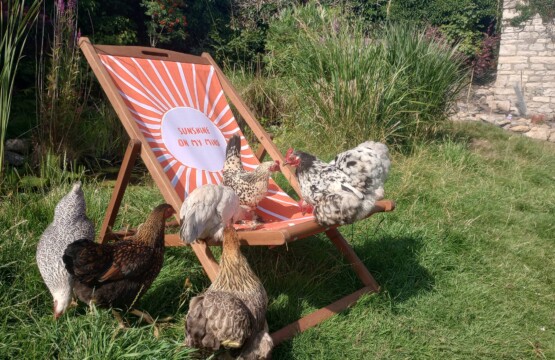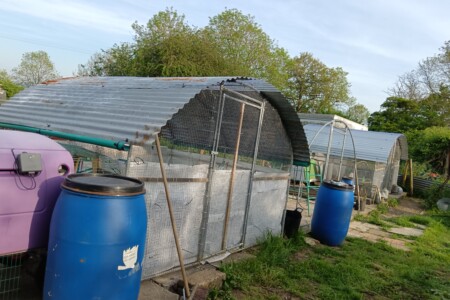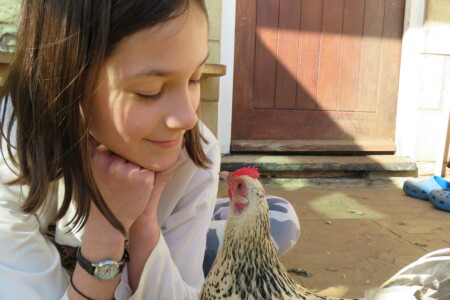Things to consider when choosing your chicken coop
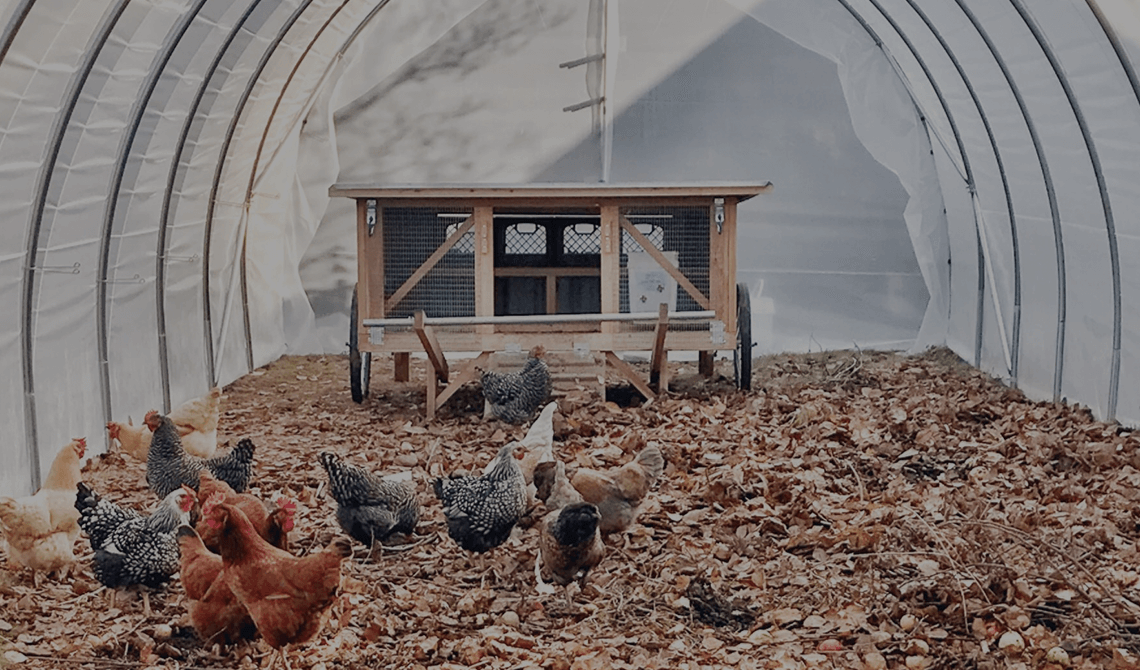
Your chicken coop will be your home for your feathered friends. So you want to make sure that it’s comfortable, secure and has all the features that your chickens need. Depending on your budget you can get all kinds of standards of coops. If you plan to keep hens for a long period of time (hopefully for their lifetimes at least) then it may be worth investing in a really decent coop to start with rather than paying twice when the first one breaks down.
What should your chicken coop be made from?
You really have only two choices; wood or plastic. Wooden coops are available at all price points but if you are looking for a cheap coop you are unlikely to find one in plastic. Look for a coop with a removable litter tray, you can normally slide it out from underneath. It makes cleaning much easier.
Wooden chicken coops
There are several problems with wood, firstly you will need to maintain them each year by painting them with wood protector. Secondly you have the problem that they are generally harder to clean out and bugs can hide in the cracks. One of the nicer things about wooden coops is that they tend to look prettier in the garden, you can use some lovely shades of wood treatment to make them a feature. Felt roofs are an absolute no. They are prime places for mite to hide in, and should you get an infestation you will never get rid of them.
Plastic chicken coops
Plastic has obvious environmental problems associated with it. Many of the plastic coops you can buy now are made from recycled plastic, but one of the most popular is the Omlet Eglu and this is not. Plastic coops come in different designs and are much easier to clean out thoroughly and to disinfect. They make ideal coops for chicken hotels as they are so quick clean. Some plastic coops have removable soft litter trays that can flop a bit when you remove them, poop flying everywhere. So a rigid tray, like with the Eglu, would be recommended.
Features of a chicken coop
A coop should have a main perching area and at least one nest box. The coop door should be able to close and be secured at night. Cunning Mr Fox can easily work out how to open a coop door but putting his nose under to lift it up or getting a paw in. So think about this when choosing the coop or how to secure the opening. The main coop area will need to be large enough to house the number of chickens you wish to own, but the larger the better.
Pet chicken coop size guide
Here is a rough size guide for the number of chickens per coop from the UK Poultry society (based on the area of the coop footprint). It is a bit on the low side, so I would recommend going up one (e.g. look to the size for five chickens if you want to house four):
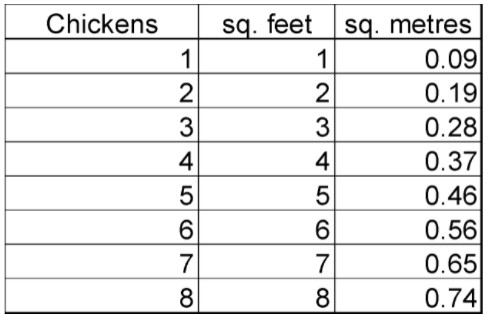
The main coop area should have perches which are raised off the floor, These are poles or bars of some kind which are 3-5cm wide. The RSPCA recommends a minimum of 15cm per bird. So even a two foot perch would be ok for four chickens. If using more than one perch there should be enough space in between to let them get on and off.
Ventilation
Your coop should have lots of good ventilation. Your chickens need to be able to breathe! It also helps to keep the hens and the coop healthy and can keep it cool in the summer time. Ventilation grills that can be shut in winter time but opened in the summer are a good way of being able to adapt your coop to the conditions. Ensure that any ventilation opening isn’t big enough for predators to get in, or the area is covered by a thick wire mesh.
Nest Box
A nest box is a space within the coop that feels separated from the main area in some way. Normally it will be positioned toward the back of the coop or away from the entrance and should be one of the darkest places inside the coop. Your chickens will go to this area to lay eggs, so you want to be able to have easy access to collect your eggs each day. Ideally you should allow one nest box per 3 chickens.
Coop ramps/ladders
Your chickens need to be able to get into your coop easily, and they need to be able to strut their stuff when they come out in the morning. So they need a way of getting into your coop. A ramp is the most common way of doing this, a board of some kind which runs from the entrance to the ground probably with some kind of grip or bars across for footing. Make sure that the ramp isn’t too steep or they won’t be able to use it, you might need to buy a longer ramp if your hens have difficulty using it, or perhaps it could be adapted with more grip or a little step at the start. An alternative is a chicken ladder. These were traditionally used because chickens are light and could hop up them but foxes and predators couldn’t use them so easily. These days people take more care over their beloved chickens and will make sure that they shut them in securely at night time.
Raised coop
A raised coop will often be on short legs which lifts it off the ground. This helps to stop the coop from rotting by being in contact with the ground but it also prevents burrowing animals from digging underneath. If you’re not careful a chicken coop can attract rats and living under a warm coop next to a food supply would be their dream. Raising the coop on legs might also make it easier to clean out and to collect eggs from. If your coop isn’t raised, or has very small legs, they you might consider sitting it on a few concrete/cinder blocks or bricks to lift it up a little further. Bear in mind that the higher you lift it the steeper your ramp will become.
Runs
Runs are caged areas that are connected to your coop or surround it. Even if you intend to let them free range, it is often useful to have a run that you can lock them into should it be necessary. If there is an outbreak of avian flu the government directive is that chickens should not be let out of their coop, or if they are then they have to be in an enclosed run with a tarp over the top that would prevent infected wild bird droppings falling into their area. Without a run then your chickens would need to be locked in their coop for weeks, possibly months and this is far from ideal. As strange as it sounds, a “Chicken tractor” is where you have a run that is physically attached to the coop, often the coop will have a couple of wheels on it. This way you can lift one end and move the coop to a fresh patch of grass before letting your hens out each day. A 2m x 2m run would be suitable for up to 6 chickens. For Bantams you can almost double everything.
Choosing a coop for a Chicken Hotel
If you are thinking of earning some extra money from your chicken keeping skills, you might think of joining the growing network of chicken hotels on HeyBetsy.com (view our applications page here). You will need a guest coop and an enclosed run to offer the service. Buying a new coop isn’t necessary as you can reuse an old one, but customers would love to see a shiny new coop on your listing. Plastic coops are recommended for Chicken Hotels as they are so easy to clean, disinfect and hard for mites to hide in. The majority of chicken owners keep 3 or 4 chickens. So if you choosing a coop to house 4 chickens would satisfy the majority of customers. Obviously the larger the coop and run, the better it is for the chickens and the greater capacity you’ll have.
In terms of a run, it will need to be fully enclosed so that your guests can’t escape and to stop intruders from getting in. You will also need to be able to cover the run with a tarp should there be a local outbreak of avian flu. If you have the space you would be advised to move the coop and run when you notice the grass being eaten down. You should also try to move onto fresh pasture for a new set of guests.

